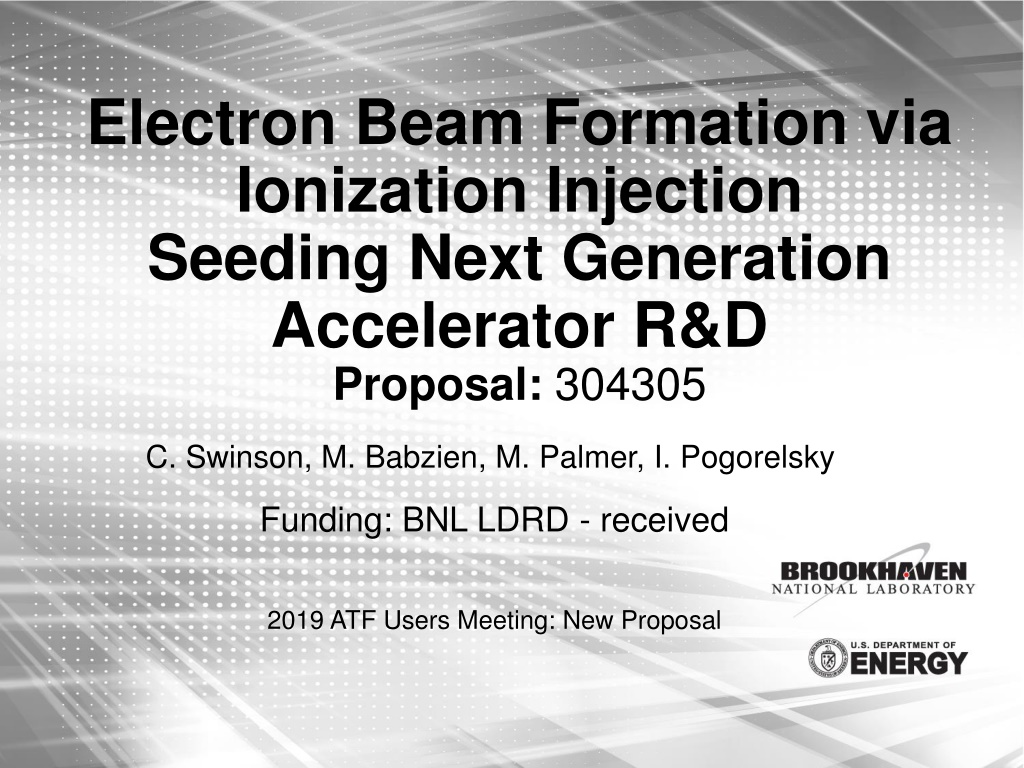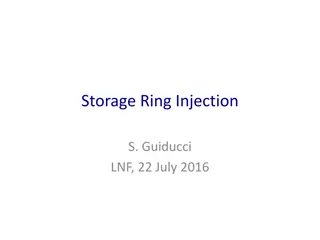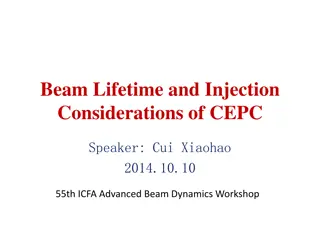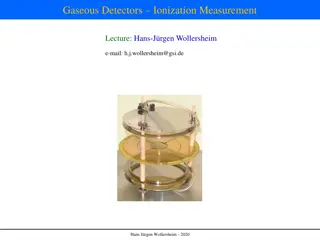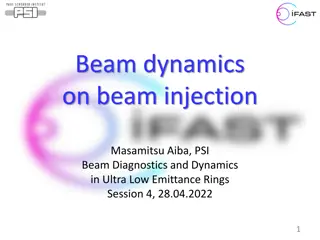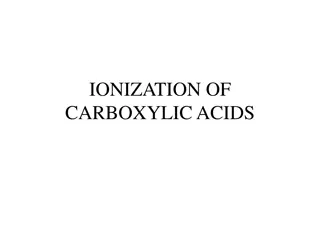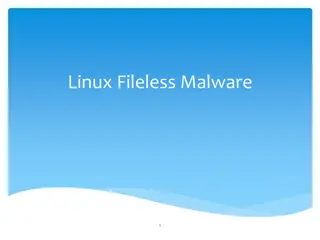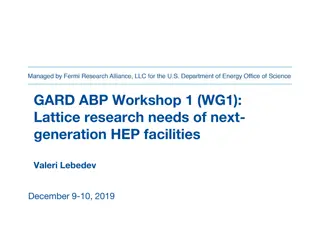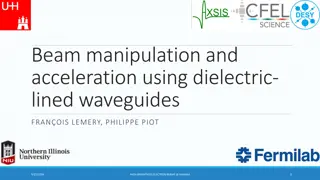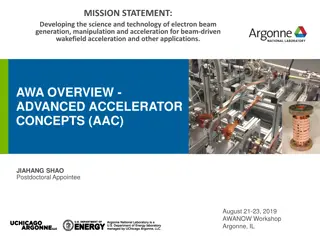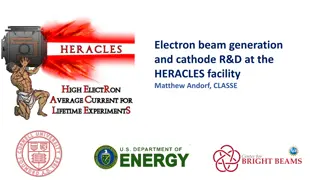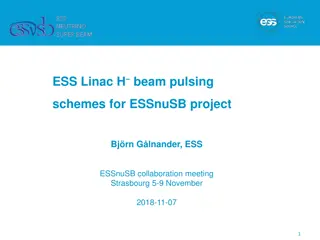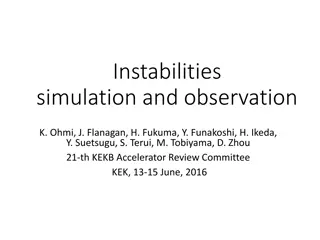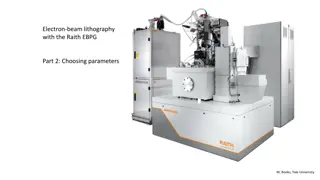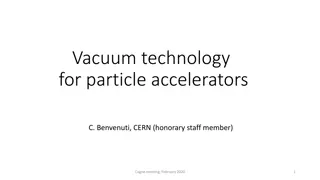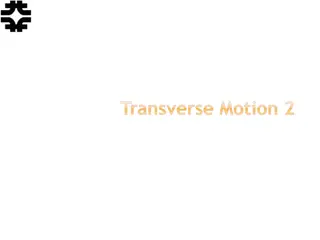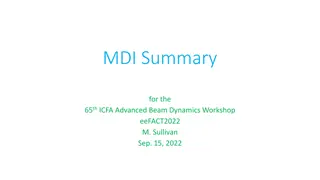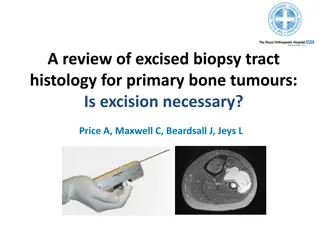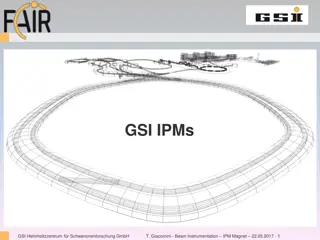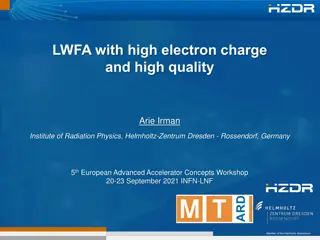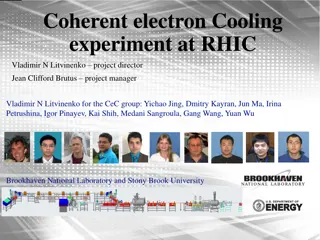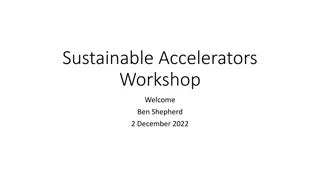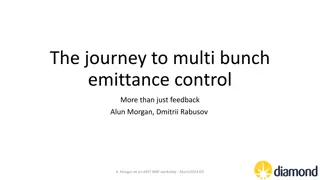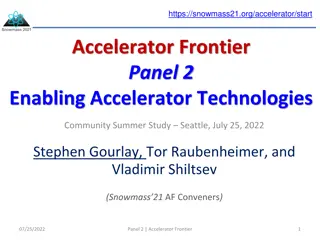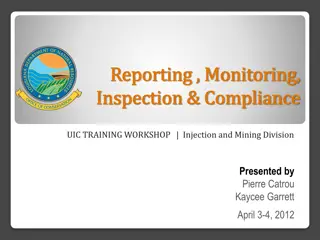Advancing Electron Beam Formation via Ionization Injection Seeding for Next-Generation Accelerators
Long-term R&D proposal outlines the development of an all-optical electron source at BNL using longer-wavelength lasers, aiming to characterize plasma wake profiles and advance laser wakefield acceleration. The project involves utilizing a 10-m laser, ionizing gas targets, and optimizing laser pulses for electron bunch generation. Justified by the potential for higher bunch charge and DOE interest, the initiative sets a path for future accelerator advancements with implications for various applications. Experiment setups and infrastructure development are key components of this innovative project.
- Ionization Injection Seeding
- Next-Generation Accelerators
- Laser Wakefield Acceleration
- Electron Source Development
- Plasma Wake Profiling
Download Presentation

Please find below an Image/Link to download the presentation.
The content on the website is provided AS IS for your information and personal use only. It may not be sold, licensed, or shared on other websites without obtaining consent from the author. Download presentation by click this link. If you encounter any issues during the download, it is possible that the publisher has removed the file from their server.
E N D
Presentation Transcript
Electron Beam Formation via Ionization Injection Seeding Next Generation Accelerator R&D Proposal: 304305 C. Swinson, M. Babzien, M. Palmer, I. Pogorelsky Funding: BNL LDRD - received 2019 ATF Users Meeting: New Proposal
Outline Long-term project motivation and goals Long-term experiment design Justification Near-term plans with present funding 2019 requirements 2
Goals Take the first step towards an all optical electron source at BNL: A unique system utilizing a 10 m wavelength drive laser. 2019-2021: Develop tools to seed an all optical electron source R&D path using longer-wavelength lasers Secondary Goal: Use first beam to characterize longitudinal profile of the plasma wake, used for electron acceleration. Mid-Term Goal (2-3 years after LDRD): Further develop the source to the level of quality needed to facilitate detailed investigation of blowout/bubble regimes of laser wakefield acceleration (LWFA) using a 10 m laser. Long-Term Goal (7+ years after LDRD): Develop the source to match present ATF electron gun capabilities and move towards viability for HEP applications.
Long Term Experiment Setup: 10 m laser pulse incident on hydrogen-nitrogen gas target. Ionization of helium and 2s, 2p electrons of nitrogen. Laser pulse continues to travel through plasma, generating a wake. 1 m laser further ionizes the nitrogen, birthing an electron bunch within the wake. nitrogen Electron bunch hydroge n 10 m laser 1 m laser
Long Term Experiment Setup: Mid-IR (CO2) laser pulse (wakefield generation) Magnetic spectrometer (electron detection) Near-IR laser pulse (ionization) Gas jet In principle, many components are pre-existing. The strong-field (1 m) laser needs refurbishment and upgrade and synchronization and diagnostics systems need to be developed.
Case All optical electron source pursued by DOE Develop infrastructure to provide starting point for such a device using the ATF s CO2 laser Begin with developing the so-called strong field laser. Continue with development of diagnostics and synchronization techniques 6
Justification First all-optical electron source using a 10 m wavelength laser allow higher bunch charge. Tool for probing plasma wakefields, for multiple applications. DOE interest already declared. Interest from user community in having the strong-field , 1 m laser. Seed for a staged long-term project, with applications for each stage. Potential to be used as an added user capability at the ATF.
Plans: Present funding: Laser recommissioning and further development Diagnostics development Synchronization systems development Simulations and planning for first experiments Design FEL room IP setup Funding began spring 18. Currently at the purchasing and hiring stage. 8
2019 Requirements No user facility capabilities needed Project is intended as a seed to encourage further work with community collaboration Laser development in the ATF laser lab Diagnostics development also in the laser lab space Move to FEL room in 2020/21 9
